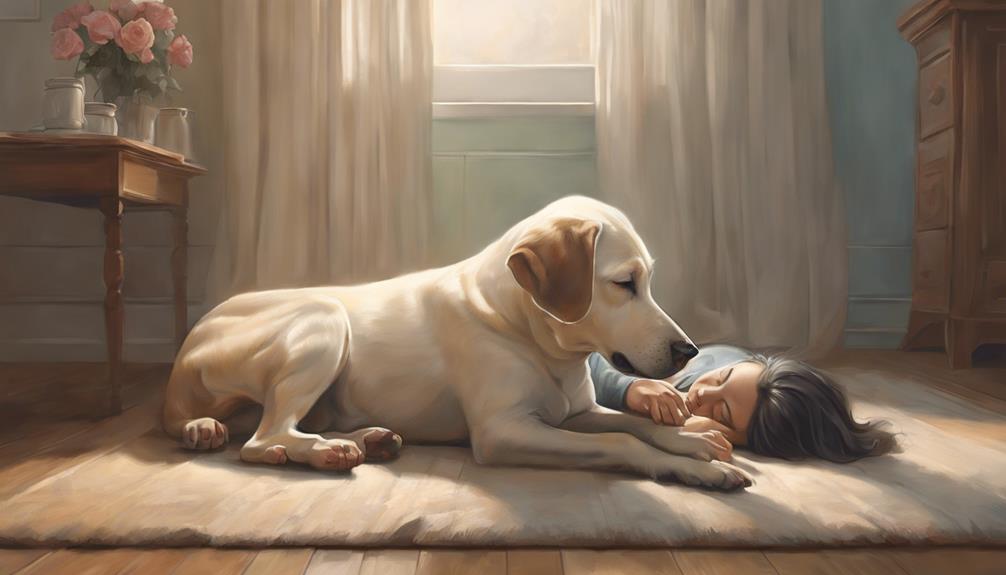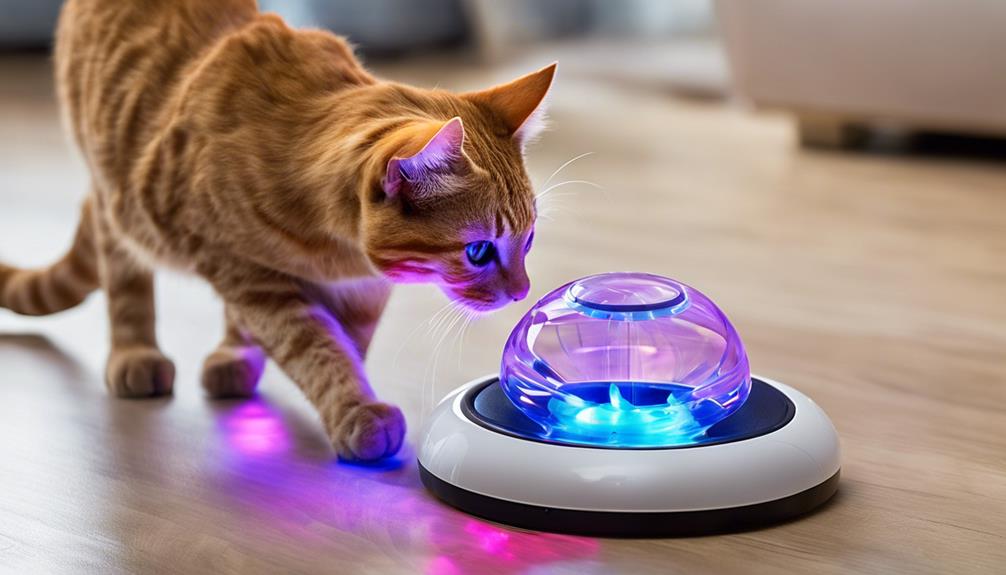Looking for the best cat breeds for cuddling? Ragdolls are known for their relaxed demeanor and striking blue eyes, seeking cuddles. Persians with flowing coats and calm temperament are perfect cuddle buddies. Abyssinians are playful and affectionate, bringing joy to families. Maine Coons are affectionate and form close bonds. Burmese cats love to snuggle and play. Himalayans are gentle cuddle companions. If you want affectionate kitties, these breeds excel. More insights on each breed will reveal even greater details on their cuddly qualities.
Key Takeaways
- Ragdoll: Known for relaxed demeanor and seeking cuddles.
- Persian: Friendly and perfect for gentle contact.
- Burmese: Love to snuggle and play interactive games.
- Maine Coon: Calm nature and great for cuddling.
- Scottish Fold: Friendly, calm, and enjoy cuddling interactions.
Ragdoll Cat Breed Overview
Ragdoll cats, known for their relaxed demeanor and striking blue eyes, are beloved for their affectionate nature and family-friendly characteristics. These feline companions aren't just pets; they become an integral part of the family.
Their enchanting blue eyes aren't just beautiful to look at but also reflect their gentle and loving personality. Ragdolls are known for their affectionate behavior, seeking out cuddles and attention from their human companions. They're always ready to play games like fetch or simply lounge around the house, following their family members from room to room.
When it comes to children, Ragdoll cats are a perfect match, as they're friendly and patient, making them ideal playmates for kids. Additionally, their friendly nature extends to other pets, making them a great addition to multi-pet households. Ragdolls truly embody the essence of a family-friendly and affectionate feline companion.
Persian Cat Breed Overview
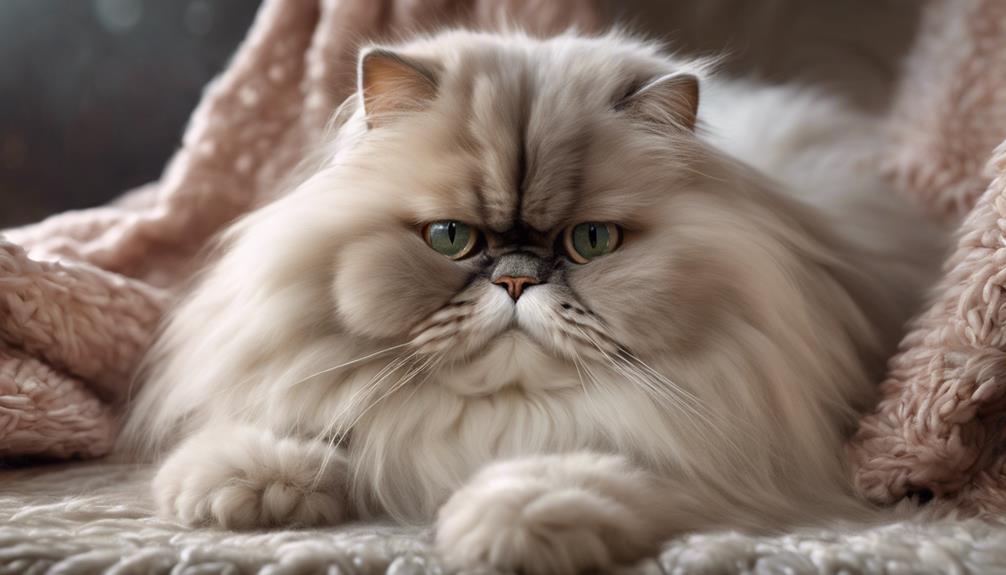
Moving on from the Ragdoll breed, let's explore the Persian cat breed known for its distinctive long, flowy coats and calm, affectionate temperament.
Persian cats are cherished for their elegant appearance, with their luxurious coats requiring daily grooming to keep them in top condition. These affectionate felines have a loving nature, making them perfect companions for cuddling sessions.
Unlike some high-energy breeds, Persians prefer a relaxed lifestyle, enjoying lounging around and seeking gentle contact with their owners. Their desire for warmth and affection makes them ideal for those seeking a close, intimate bond with their pets.
It's no wonder that Persians are popular in North America; their stylish looks combined with their friendly and docile personalities make them a favorite choice for those looking for a devoted and loving feline companion.
Abyssinian Cat Breed Overview
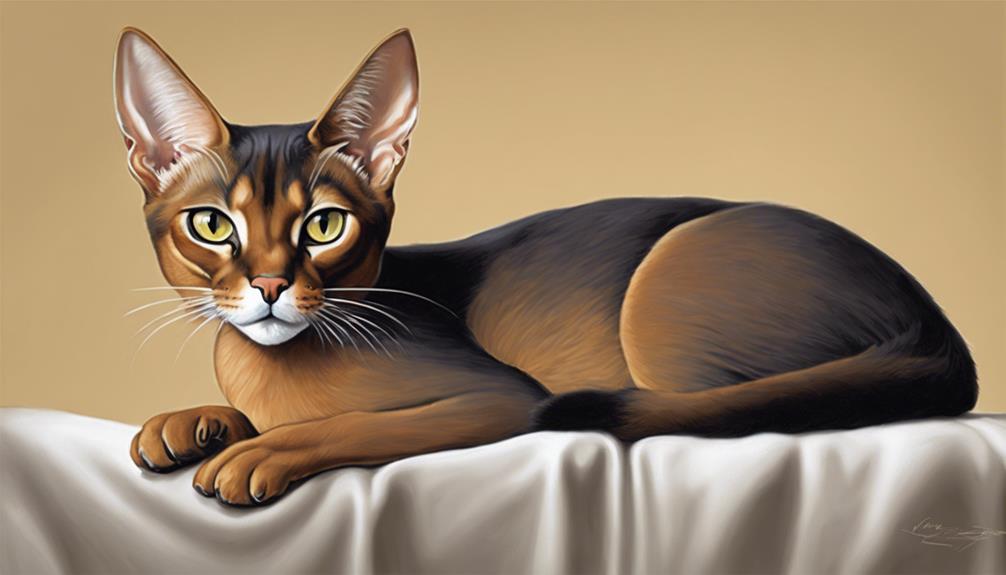
Abyssinian cats, the oldest known breed, are remarkable companions with their intelligence, curiosity, and athletic prowess. Highly social and people-oriented, they thrive on interactive play and quality time with their owners.
While not typically lap cats, Abyssinians enjoy activities and even leashed walks, making them engaging and loving feline friends.
Abyssinian Cat Characteristics
Known for their intelligence, curiosity, and athleticism, the Abyssinian cat breed is one of the oldest cat breeds that form strong bonds with their human companions. Abyssinian cats are highly intelligent and social creatures, enjoying interactive play and spending quality time with their owners. While they may not be traditional lap cats, Abyssinians prefer to be involved in activities and might even relish leashed walks. Their distinctive ticked coat patterns set them apart, and although they are not typically known for being overly cuddly, they make loyal and affectionate companions. Below is a table summarizing key Abyssinian cat characteristics:
| Characteristic | Description |
|---|---|
| Intelligence | Highly intelligent and quick learners |
| Social | People-oriented and enjoy human interaction |
| Activity Level | Energetic and playful |
| Coat Pattern | Distinctive ticked coat pattern |
| Bonding Behavior | Form strong bonds with their owners |
Abyssinian Temperament Traits
We can now explore the temperament traits that define the Abyssinian cat breed, shedding light on their unique personality characteristics. Abyssinians are known for being affectionate, playful, and social creatures. They thrive on interaction and attention from their human companions, always eager to join in on activities and games.
These cats have a special way of showing their love, whether it's through cuddles, head bumps, or playful antics. Their attention-loving nature means they enjoy being a part of the action, making them great companions for those seeking a lively and engaging feline friend.
Despite not being traditional lap cats, Abyssinians make up for it with their spirited and affectionate demeanor, bringing joy and warmth to their families.
Abyssinian Cuddling Preferences
When seeking feline companionship that prioritizes playful interactions over traditional cuddling sessions, the Abyssinian cat breed stands out for their affectionate and engaging nature. Abyssinian cats, known for being intelligent and active, have a unique way of showing their love through interactive play and quality time spent with their human family. While they may not be the typical lap cats that enjoy long cuddle sessions, Abyssinians thrive on companionship and enjoy participating in various activities with their owners. Their playful demeanor and social nature make them great partners for interactive play sessions, where they can showcase their athleticism and curiosity. These cats are perfect for individuals seeking a lively and engaging feline companion to share their days with.
| Abyssinian Cuddling Preferences | |
|---|---|
| Affectionate Nature | Engaging Demeanor |
| Playful Interactions | Interactive Play |
| Prioritizes Companionship | Active and Curious |
Maine Coon Cat Breed Overview
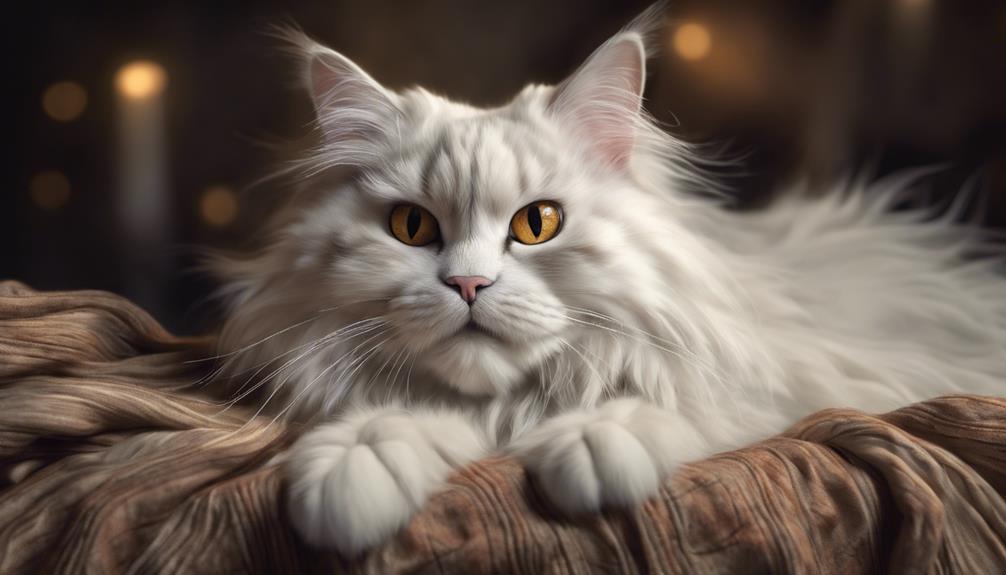
Maine Coon cats are renowned for their impressive size, often reaching up to 18 pounds, making them one of the largest domestic breeds.
Their calm and affectionate nature makes them wonderful companions for cuddling and relaxation, ideal for families seeking a loving feline friend.
When it comes to grooming and care, these fluffy giants require regular brushing to maintain their long, luxurious coats in top condition.
Size and Personality
Occasionally, large and affectionate, the Maine Coon cat breed captivates with its friendly and adaptable nature, making it a sought-after companion for families seeking a cuddly pet. Maine Coons are known for their calm and affectionate demeanor, enjoying cuddling sessions and lounging with their humans.
Their friendly personalities make them excellent companions for households, as they often form close bonds with one person for affection and companionship. These cats, with males weighing up to 18 pounds, bring both size and sweetness to the table.
Their long, soft coats in various colors and patterns add to their charm as cuddly pets. Maine Coons truly embody the perfect blend of size and personality for those in search of a loving feline companion.
Grooming and Care
Regular grooming is essential for maintaining the health and appearance of Maine Coon cats due to their long, soft coats that are prone to tangling. Brushing their silky coat at least once a week not only prevents matting and reduces shedding but also provides an opportunity for bonding and showing them love and attention. These gentle giants with an affectionate personality will appreciate the care and affection showered on them during grooming sessions.
Bathing them occasionally will help keep their coat clean and free of dirt, further enhancing their silky fur. In addition to regular grooming, don't forget about trimming their nails and cleaning their ears to ensure their overall well-being. Maine Coon cats truly thrive on the love and attention they receive during grooming, strengthening the bond between you and your feline friend.
Burmese Cat Breed Overview

When considering cat breeds known for their playful and affectionate nature, the Burmese cat stands out for its athletic and extroverted personality. These affectionate companions aren't only playful but also love to snuggle, enjoying interactive games and close physical contact with their owners. One of the striking features of Burmese cats is their sable coat color, adding to their unique and beautiful appearance.
Known for being among the most loving cat breeds, Burmese cats are highly sociable and thrive on spending time with their human family. Similar to Bombay cats, Burmese cats are recognized for their affectionate and people-oriented personalities, forming strong bonds with their owners. If you desire a feline friend that will engage in playtime and shower you with affection, the Burmese cat could be the perfect match for you.
Sphynx Cat Breed Overview
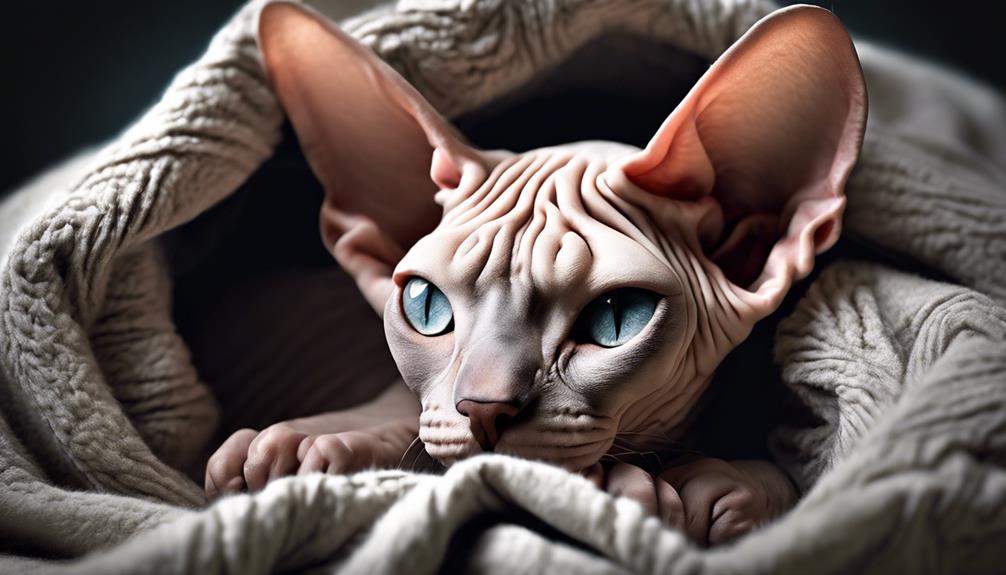
Looking for a unique and affectionate feline companion? Sphynx cats might just be the perfect cuddle buddies you've been searching for. Here's why they excel in providing warmth, affection, and companionship:
- Hairless Wonder: Sphynx cats are known for their hairless bodies, which not only make them unique but also require warmth and human interaction for comfort.
- Bright Personality: With a bright and extroverted personality, Sphynx cats enjoy cuddling beneath covers and on laps, seeking warmth and closeness.
- Living Hot Water Bottles: These feline companions act as living hot water bottles, radiating warmth and showering their owners with affection.
- Affectionate Nature: Despite their unusual appearance, Sphynx cats are incredibly affectionate and crave close physical contact with their human companions.
- Perfect Cuddle Buddies: If you're in search of a cat that loves cuddling and provides constant warmth and companionship, the Sphynx breed might just be the ideal choice for you.
Cornish Rex Cat Breed Overview

After learning about the affectionate and cuddly nature of Sphynx cats, let's now explore the distinctive qualities of the Cornish Rex cat breed.
Cornish Rex cats are known for their attention-seeking behavior and unique wavy coat. They're playful and enjoy interactive activities like climbing and fetching toys, making them engaging companions.
What sets the Cornish Rex apart is their strong desire for physical affection; they love to be stroked, held, and cuddled. These cats have a special affinity for snuggling under covers, seeking warmth and closeness with their owners.
Due to their affectionate nature and love for human interaction, Cornish Rex cats make excellent therapy pets, providing comfort and companionship to those in need.
If you're looking for a feline friend who craves your attention and enjoys being a close companion, the Cornish Rex could be the perfect match for you.
Scottish Fold Cat Breed Overview
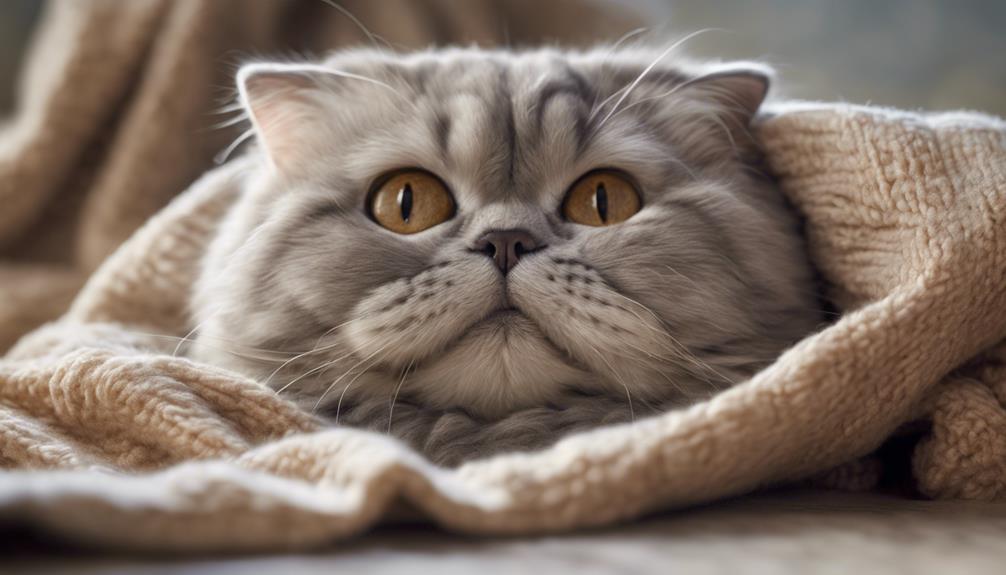
Exploring the unique traits of the Scottish Fold cat breed reveals their captivating charm and distinctive characteristics. Scottish Folds aren't only known for their adorable folded ears but also for their friendly and calm nature, making them perfect cuddle buddies. Here are some key points to understand more about these affectionate felines:
- Scottish Fold cats have distinctive folded ears that give them an owl-like appearance, adding to their charm and unique look.
- They're known for their friendly and calm demeanor, making them great companions for families and individuals seeking a loving and affectionate pet.
- Scottish Folds enjoy cuddling and affectionate interactions but aren't overly demanding of constant attention, making them ideal for those looking for a balance between affection and independence.
- With their large eyes and sweet expression, Scottish Folds have a captivating presence that draws you in for snuggles and quality time together.
- This breed is suitable for owners who've time to dedicate to their pet's social needs and enjoy the warmth of a furry friend always ready for a cuddle session.
Himalayan Cat Breed Overview

Himalayan cats are a delightful mix of Persian and Siamese breeds, boasting luxurious long fur and captivating blue eyes. Known for their gentle and affectionate nature, these felines make wonderful companions, enjoying cozy cuddle sessions with their owners.
Regular grooming is essential to keep their fur in top condition and prevent any pesky matting issues.
Himalayan Cat Appearance
Crossing the elegant Persian with the graceful Siamese results in the striking appearance of the Himalayan cat breed. These felines boast a luxurious long fur with a colorpoint coat pattern and captivating deep blue eyes.
Here are some key features of the Himalayan cat's appearance:
- Luxurious long fur
- Striking colorpoint coat pattern
- Captivating deep blue eyes
- Elegant Persian-like features
- Graceful Siamese-like characteristics
The combination of these traits creates a visually stunning cat that isn't only beautiful to look at but also incredibly soft to touch. When it comes to cuddling, their appearance is just the beginning of the joy they bring into your life.
Himalayan Cat Personality
With their gentle and sweet demeanor, Himalayan cats quickly win over the hearts of those seeking affectionate and loving feline companions. These striking beauties not only boast a luxurious appearance with their long fur and flat faces but also have personalities to match.
Himalayan cats are known for being affectionate and forming strong bonds with their human family members. Their social nature makes them delightful companions who enjoy interacting and cuddling with their loved ones. Despite their regal appearance, these cats are calm and well-behaved, often choosing to lounge by your side or curl up in your lap.
If you desire a cat that exudes warmth and loves to snuggle, the Himalayan breed may be the perfect match for you.
Siamese Cat Breed Overview

Known for their striking appearance with distinctive masked faces and beautiful pale blue eyes, Siamese cats are highly vocal and social felines that form strong bonds with their human companions. These cats aren't only visually captivating but also incredibly affectionate and engaging. Here are some key points about the Siamese cat breed:
- Siamese cats are known for their talkative nature, often engaging in lengthy conversations with their owners, making them excellent companions for those who seek constant interaction.
- They crave attention and affection, displaying a dog-like demeanor in their need for companionship, making them ideal for cuddling and bonding with their humans.
- Popular for their striking looks and affectionate personality, Siamese cats form deep and lasting connections with their owners, bringing joy and companionship to their households.
- Their intelligence and active nature require mental stimulation and play, making them great for owners who enjoy engaging their pets in interactive activities to keep them happy and content.
- Siamese cats aren't just pets but loving members of the family who thrive on love, attention, and affection, making them one of the best cat breeds for cuddling.
Frequently Asked Questions
What Cat Is the Most Cuddly?
We believe the most cuddly cat is the Ragdoll. They relax like a ragdoll in our arms, making us feel truly connected. Their affectionate nature brings warmth and comfort, making them the perfect companions for cuddling moments.
How Do I Choose a Cuddly Cat?
When choosing a cuddly cat, we consider their affectionate nature, seeking out physical contact and human companionship. Researching breed characteristics helps us find a feline that suits our cuddling preferences. Interacting with different breeds firsthand guides our choice.
What Is the Friendliest Cat Breed?
When it comes to the friendliest cat breed, we adore the Ragdoll. Their affectionate nature and puppy-like behavior make them irresistible companions. Engaging with them is pure joy, as they love to cuddle and form deep bonds.
What Breed of Cats Like to Be Picked Up?
We found that Ragdoll, Maine Coon, Birman, Burmese, and Siamese cats generally enjoy being picked up for cuddles. Each breed has unique traits, but they all share a love for human interaction, making them great for cuddling.
Conclusion
In conclusion, when it comes to choosing a cuddly feline friend, the best cat breeds for snuggling up are the Ragdoll, Persian, Abyssinian, Maine Coon, Burmese, Cornish Rex, Scottish Fold, Himalayan, and Siamese.
These breeds are known for their affectionate nature and love for cuddling, making them perfect companions for those seeking a furry friend to snuggle with. Remember, a purring cat in your lap is the best form of therapy for a long day.

